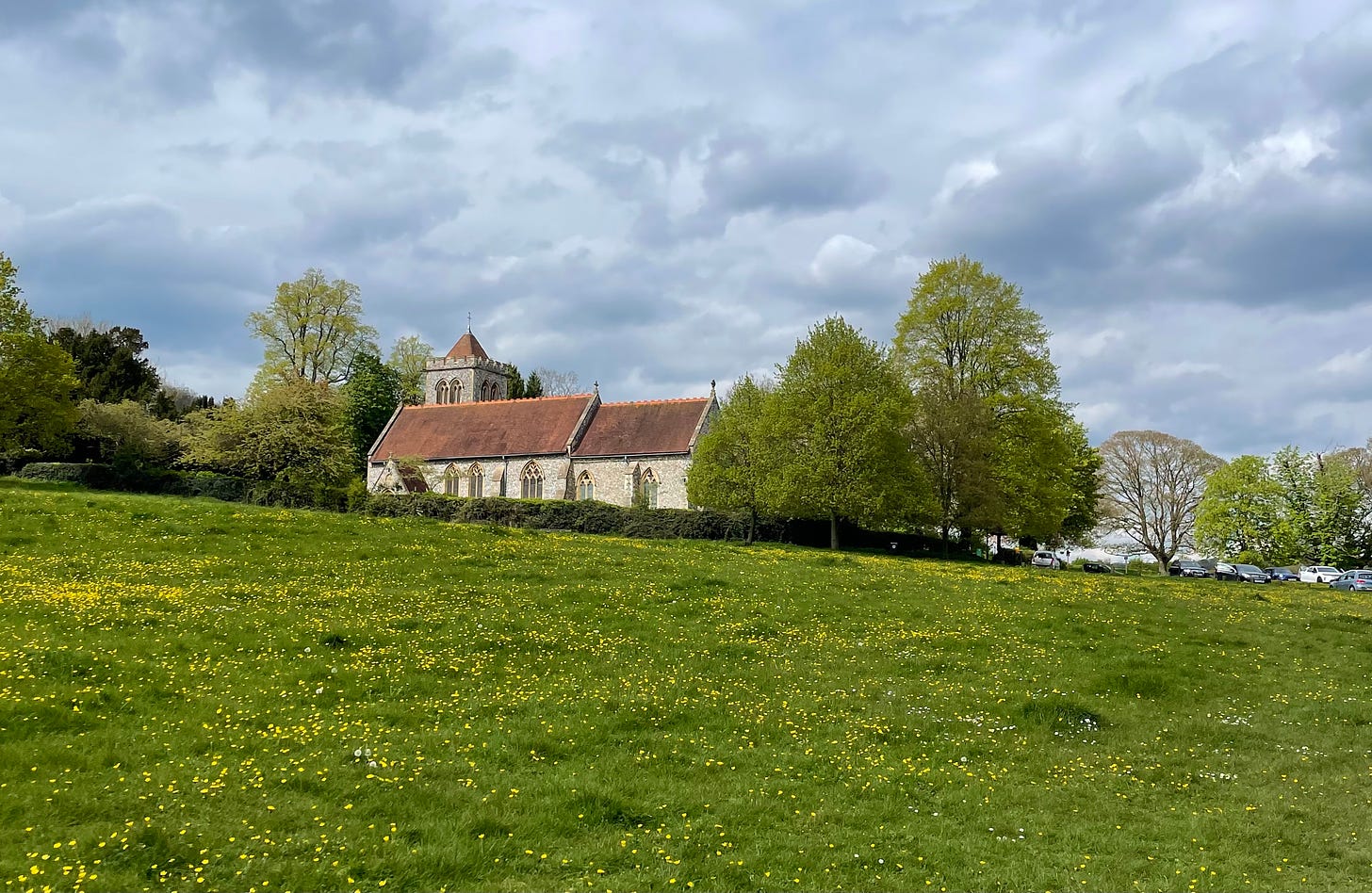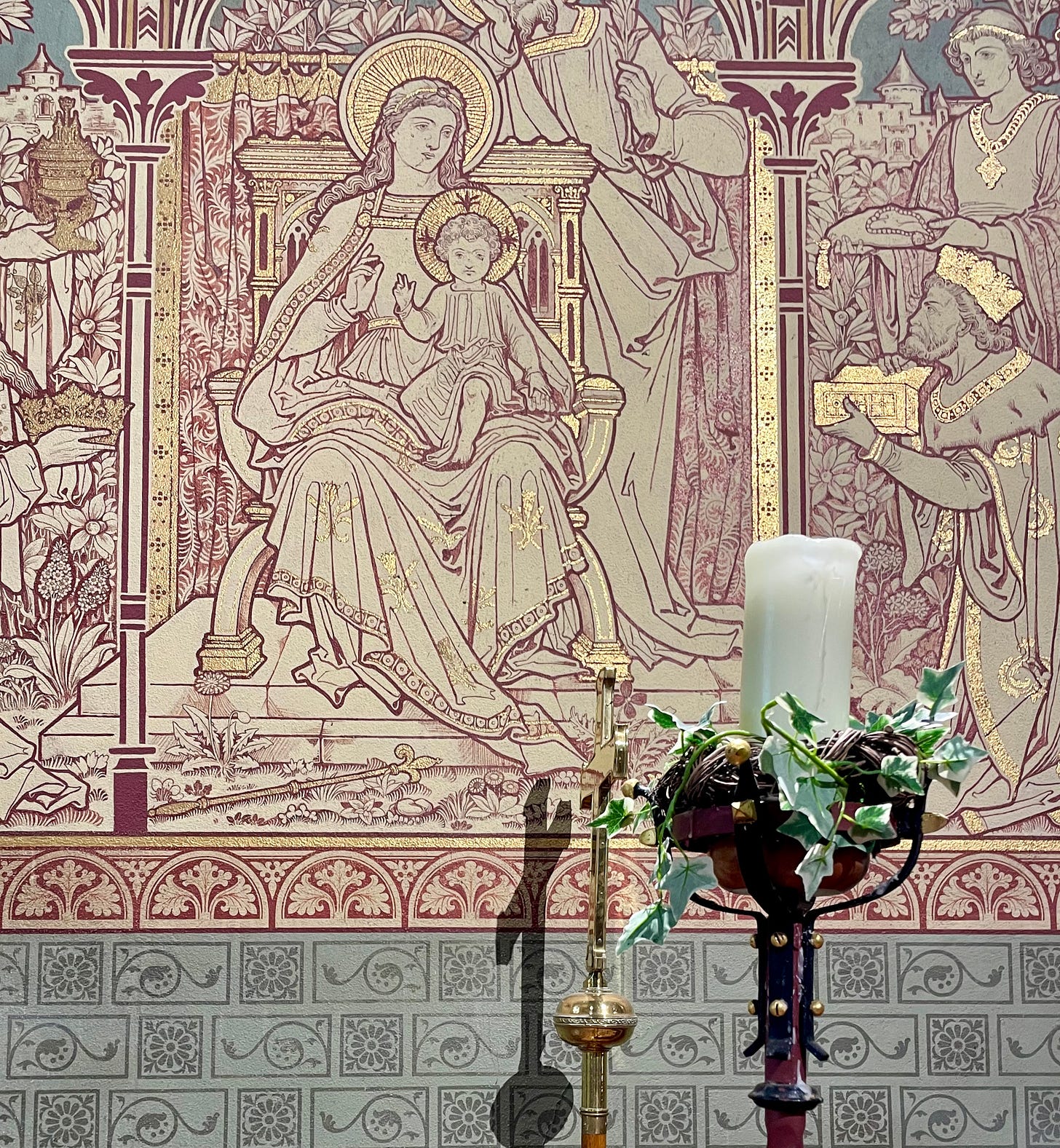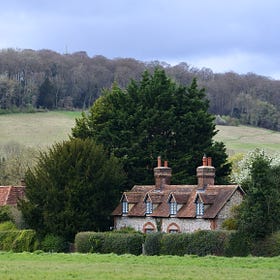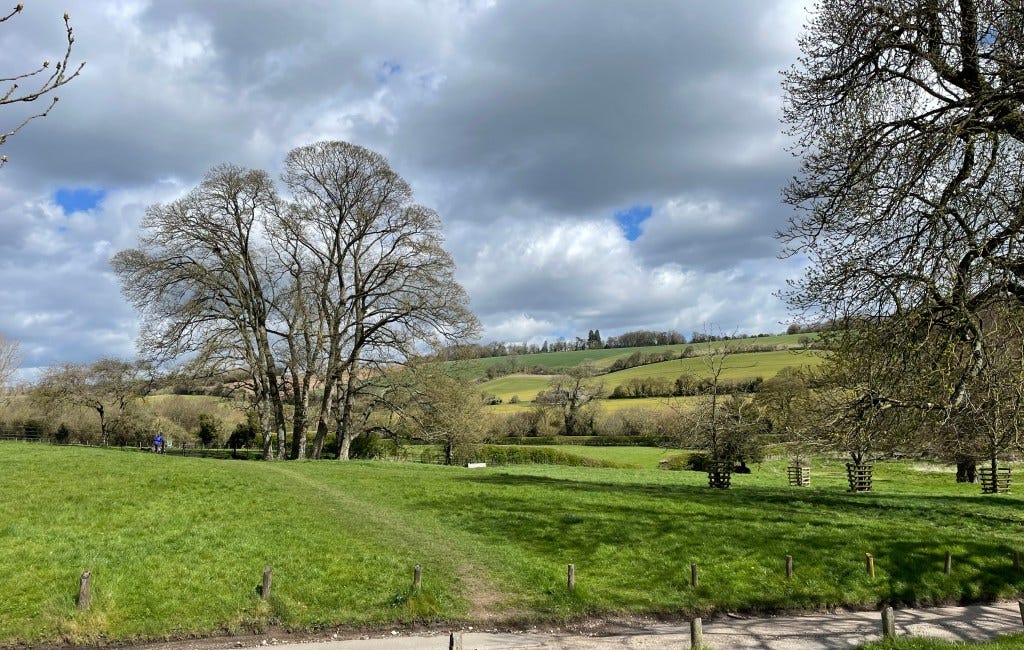Keeping up Appearances
Look no further than a small country church for examples of social climbing, ensuring our status is recognised long after we’ve gone.
Hughenden has an impressive story full of important people with complicated family histories that will take too long to unravel, so I have cherry-picked the highlights.
Hughenden Valley feels like a million miles from High Wycombe, a busy commuter town 30 miles north west of London. All 8,000 acres is managed by the National Trust who also run Hughenden Manor, the landscape remaining largely unchanged with its grazing herd and fast-flowing chalk stream cutting a path through the valley.
Inside the church is an unusual monument erected by a reigning English monarch to a commoner. Just in case you were unsure of where not to sit, the brass name plate is still in place: SEAT OCCUPIED BY THE RIGHT HON. THE EARL OF BEACONSFIELD, otherwise known as Benjamin Disraeli (1804 - 1881), Prime Minister to Queen Victoria and Lay Rector of this parish.
Why stop at a parapets and pinnacles?
As prospective leader of the Conservative Party, Hughenden Manor presented an ideal opportunity as a new country seat for the leader of the Conservative Party. Disraeli purchased the property in 1862 and promptly commissioned Gothic revivalist architect Edward Buckton-Lamb, who refashioned the white stucco house into a red brick manor, added chimneys, parapets, battlements and pinnacles you see today.
He is buried with his family outside in a crypt excavated from the slope beneath the church, a kind of walk-in tomb. In contrast to the Manor make-over, you’d walk right past it’s so modest. An admirer, Mrs Brydges Williams, offered to make Disraeli her heir if she could be buried alongside him. Her offer was accepted, and she also lies in the crypt. "I have lost a kind and faithful friend," Disraeli wrote, "but I have lost her in the fulness of years, and she has made me the heir to her not inconsiderable fortune."
Victoriana
The church is the usual assemblage of Victoriana and if you are familiar with previous articles celebrating some of the wonderful local parish churches, you will know that I despair at the Victorian DIY that too often left buildings unrecognisable. Sometimes they uncovered beautiful and rare medieval wall paintings hidden beneath layers of plaster at the Reformation (1533- 1603), other times dark, grim and dusty interiors in various shades of rusty red were the order of the day. The exception are these interiors that boast striking Victorian design added when the church was re-built in the 1870’s.
Keeping up with the Joneses
Arranged along the back wall are the infamous Medieval Hughenden effigies, an assortment of recumbent and upright carvings that are all fakes! Some are no doubt originals, but with added coats of arms and symbols are a wonderful example of the lengths a newly enriched family went too to establish their lineage back to the 14th century and Sir Simon de Montfort fame. It seems that keeping up with the Joneses is nothing new. You can judge for yourself how comical they look, from the skeletal to a Ninja Turtle.
Back outside to wander around the small churchyard that has been given over to a shaggy lawn and hopefully wildlife. Despite the grand Manorial make-over and rebuilding of the church, by Victorian standards, this cemetery sits plainly and comfortably in the Chilterns landscape.
Cream Teas
Highly recommended and available on Sunday’s and Bank Holidays from April to October are the best of home baking serviced up by the volunteers. Do support them.
All content and images are copyright of Mary Tebje and may only be used with permission.
If you liked this article, please share it and give it a ❤️
Links you may need
Hughenden Manor is one of the smaller country houses owned by the National Trust. You can walk in the valley and surrounding countryside without membership visiting the grand memorial to Disraeli in the grounds above the Manor.
Neighbouring Bradenham is associated with the Disraeli family and can be reached on foot from Hughenden. There are links to Hughenden walks in this article below.
Bloomin’ Marvellous
It takes a visitor to show the locals where to go








